This post is largely about good news rather than good images.
Several weeks ago I reported here about the alarming decline of the American Kestrel in most of North America. That decline has been apparent to me locally (Utah) as I’m seeing and photographing far fewer of them than in the past. Other more scientific and reliable sources report similar declines in many areas of the continent.
But apparently there are pockets of habitat where kestrels are still thriving and one of them is the Centennial Valley of southwest Montana. I spent roughly 16 days in the valley this spring, summer and fall, spread out over four trips and it became increasingly clear as the season wore on that kestrels there are doing just fine. The last trip in early September was particularly encouraging as these little falcons seemed to be found in good numbers in all habitats where one might expect to find them. Based on the numbers of birds I saw (and on one report from a very bird-knowledgeable gentleman who lives in the valley) the kestrel nesting season there was a highly successful one.
Each of these images was taken on my recent September trip to the valley.
Our Utah kestrels prey largely on voles which requires a particular hunting style that I’m used to – flying fairly low over vole habitat, hovering, then diving on potential prey. But the birds in the Centennial Valley hunt mostly grasshoppers which calls for a different technique. Grasshoppers are numerous (that’s an understatement), smaller than voles and they don’t burrow as adults so the kestrels typically hunt from low perches like fence posts and fence wires or moderately higher perches such as utility wires and poles.
They’re usually scanning the ground and vegetation almost directly below them for “hoppers” so when they spot one they typically drop almost straight down from their hunting perch. This bird is looking for grasshoppers almost directly beneath its barbed wire perch.
Seconds later it plunged after a grasshopper into this prickly plant just behind the fence wire but this time it came up empty.
The same bird then landed on this nearby metal fence post and continued hunting with the same technique. As you can see from its launch posture and the direction it’s looking, the kestrel’s potential prey is just below the post.
When hunting from utility wires which are much further off the ground, their drop onto prey can look pretty dramatic as they fall almost straight down with wings still held tight against their bodies.
As numerous as these birds were in the valley this summer, like most kestrels they were very difficult to approach so I got few quality images of them. This one had been eating a grasshopper but dropped it (apparently deliberately) as I approached and gave me this look back just before it took off. I felt badly that I might have interrupted its meal but I’m confident that it would have no trouble catching as many grasshoppers as it could eat.
I can’t help but wonder if one of the reasons the kestrels are doing so well here is that the Centennial Valley is one of the most pristine areas left in the country. One of the suspected causes of the dramatic drop in kestrel numbers is chemical contamination but the valley and nearby mountains would be relatively free of pesticides. Pure speculation on my part…
I’m not naïve enough to believe that this single healthy population is an indicator of an end to the cause of the kestrel’s decline but I was delighted to see so many of them in the valley and if the species ever does make a comeback it will likely be pockets of thriving birds like this one that fuel their recovery.
Ron


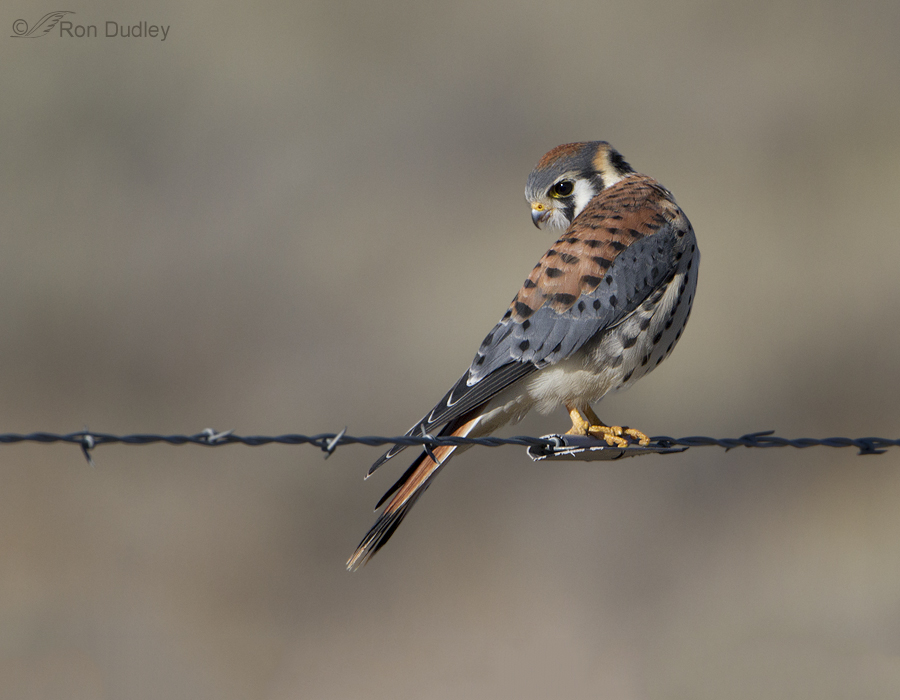
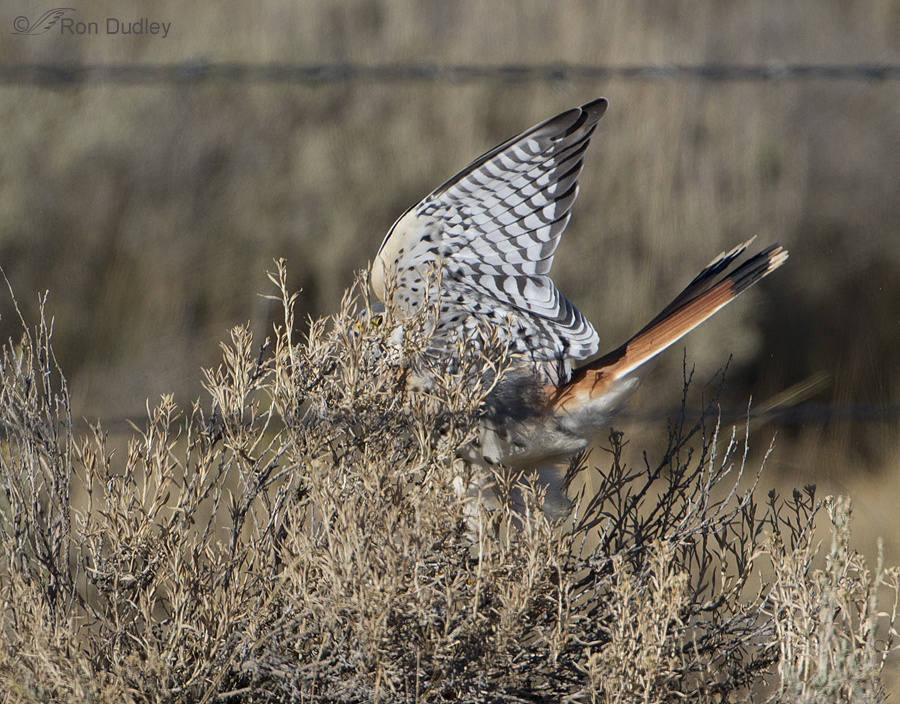
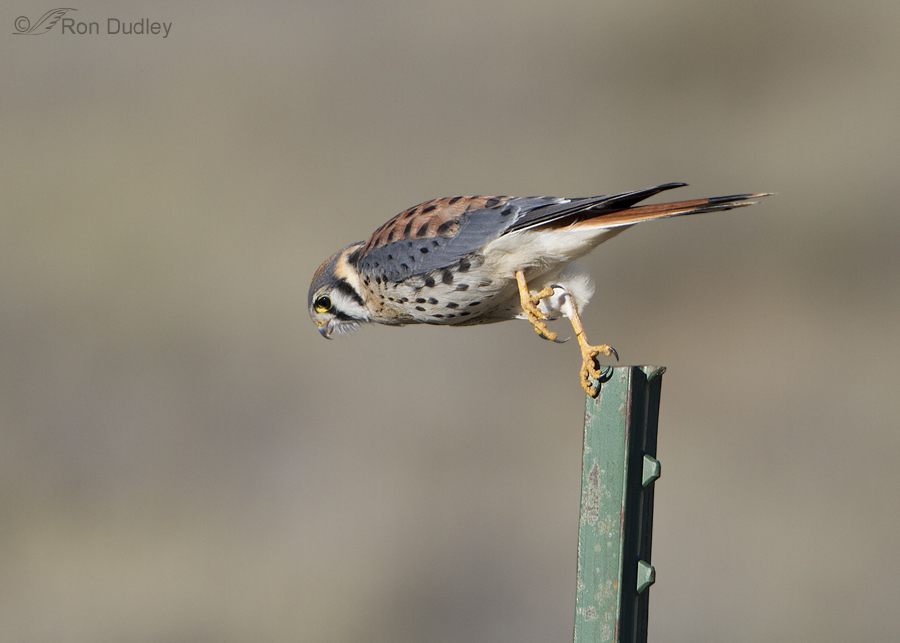
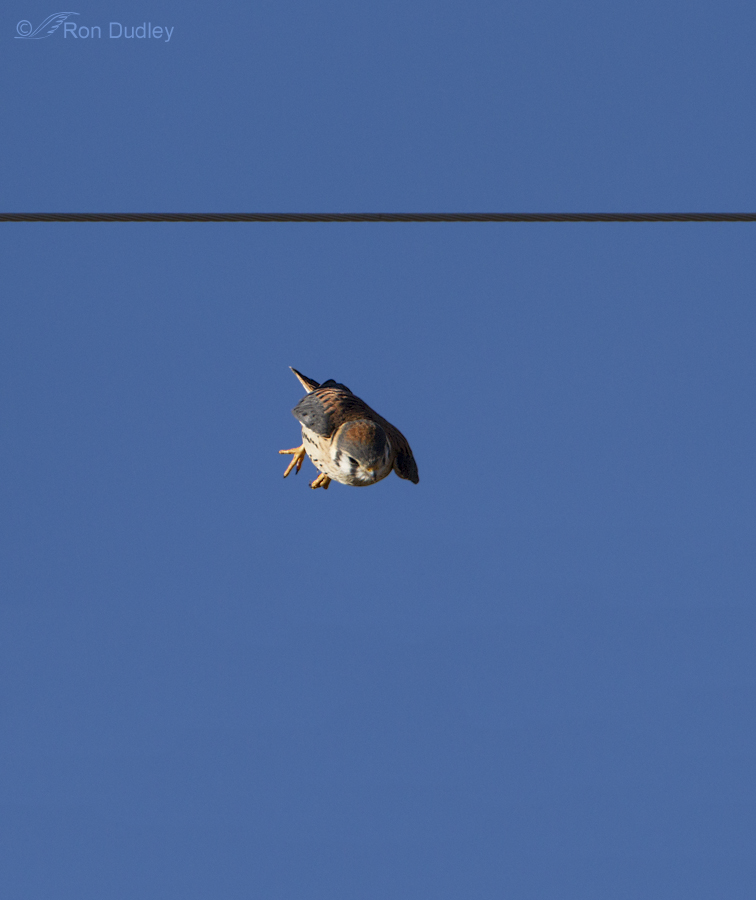
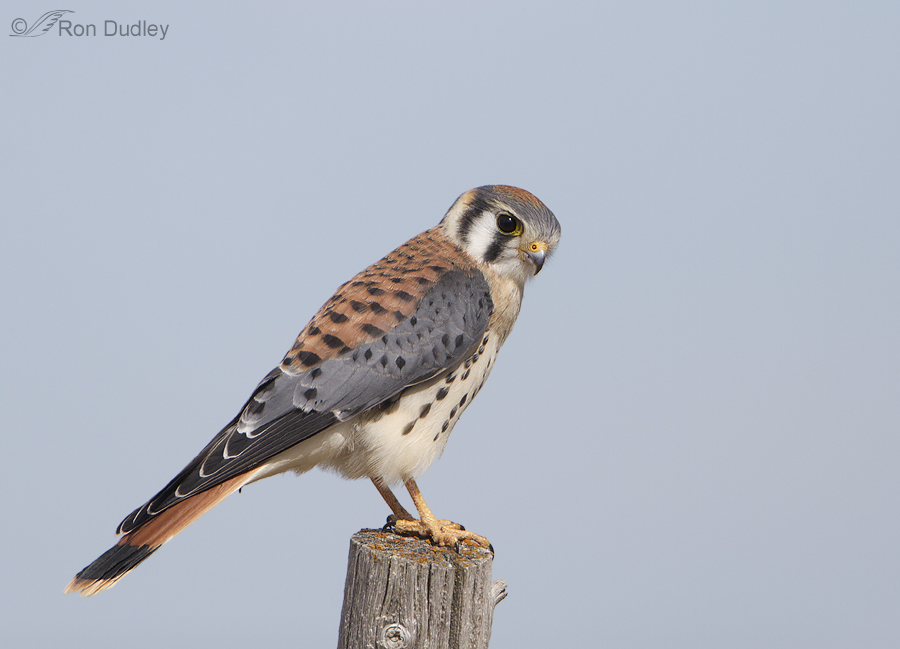
That does sound like some good news. I enjoyed the images as well. I am driving to Cairns, and have been inland not on the coast and have seen quite a lot of our Kestrels, but not had time to stop to try to photograph any. Their techniques seem to vary a bit, but I have seen at lest two do the swift drop you describe.
Thanks for the nice shots of these lovely birds. Had a crush on them since I first met my falconer friend’s male kestrel. Lots of personality in a small package and lots of attitude, too.
Sensational shots and interesting speculation! You’re probably correct.
Charlotte
Lovely! I love these little falcons. I just met a female kestrel in captivity and was amazed at how such a small beatiful bird can be so lethal!
Lethal is right, Kim. I took care of a captive male for part of a summer who lived in the house I was watching for the owners. His name was Willie and he “hated” bare toes for some reason. If you were barefoot he’d attack your toes with beak and claws and let me tell you, it really got your attention!
I can’t help but smile these days when I see photos of these gorgeous birds. Their feisty personality shows through even in static photos. I’m with Elephant’s Child on the dive bomb shot. The only time I’ve ever seen a bird do that in person was a Brown Booby down in the Caribbean. I’m delighted that they seem to be doing well in the Centennial Valley, and I hope they can sustain their healthy population over time. The world would be a very sad place without Kestrels. Thank you for bringing some good news.
Yes, it would be a sad place indeed, Susan.
When I was in Costa Rica two years ago, our guide (very knowledgeable)said they had seen a definite decline in kestrels wintering there.
Not good news, Louise.
Checked out Bill Dove’s kestrel link…interesting info…was looking for build-it-yourself nest box specifications…siting and monitoring. Did I miss it?
Patti: There is a link (in red) on building and installing a nestbox and that will take you to a nestbox blueprint page.
Bill
Thanks…pc
Found it…perfect…very clear instructions…Thanks!
Ron: I’m still doing research of this Kestrel issue but one thing that seems apparent is there are annual significant changes in the population regionally in much if not all of N.A. (the species is also found in S.A.). Much like global warming/climate change looking at the picture over the course of a year or season doesn’t give much of a true sense of the overall picture. Kestrels seem to be able to have a successful breeding season but are not sustaining that over an extended period of years.
The biggest issue is the cause(s) are unknown. I have committed to providing 100 nestboxes and will be involving student groups, scouts, guides and young naturalist to build, place and monitor the boxes with my region. I did a smaller program about 20 years ago with good results. Below is a link people might be interesting in checking out. The Peregrine Fund has a program to help the Kestrel with nest boxes. This is something an individual can do with a single box or a more involved program.
http://kestrel.peregrinefund.org/
Bill
Thanks for the link, Bill.
I built a kestrel box a few years ago and hung it in my yard but it was occupied by starlings (the next year I modified the entrance hole to exclude them). The best nearby kestrel habitat is about 1/4 mile away and the kestrels, as I feared, just weren’t interested.
Not every box will get utilized by Kestrels. But if put in a location with abundant food and space you increase the chances greatly. I’m not sure if you limit the entrance hole to exclude Starlings will it still allow access for Kestrels. That may have been part of your lack of success. They normally are not comfortable close to an occupied home either. I believe the link to that Peregrine site also talks about entrance hole size and direction facing for the entrance. Because members here live in different climates that can play a role on the best direction. Generally speaking it is best left unpainted and definitely not painting the interior, no matter what paint is used. Rough lumber has a slight advantage over finished but some wire to aid in climbing out of the box can be helpful at fledge time.
Bill
Bill, I had given up on kestrels when I made the entrance opening smaller.
How wonderful that there are still pockets where they not only survive but thrive. And I love that dive bomb.
I’m glad you like that shot, Elephant’s Child. I almost didn’t include it…
Nice shot’s Ron. Glad to here they’re doing well there!
Thank you, Deb. Me too…
What an exquisite looking bird the kestrel is. This is my first view of one… thanks so much. I appreciate how you hold concern for the fragility of the species with the pleasure for the individuals and small populations that do thrive. Coexisting, neither dimming the other.
They are beautiful little falcons, Alison – favorites of many folks. The males are more colorful than females but both sexes are quite striking.